The History of Coins
in China
Many forms of money,
and yet a unique stability.

China's history by means of its coins
China has a very unusual history for us Europeans. An ancient civilization, a strong tradition, and yet so different from what we are used to from our point of view. On the basis of the exchange commodity coin, one can effortlessly string together the different centuries. We have made a video about China's coins.
The whole video lasts 33 minutes and you can find it at the end of this post.
For all those who want to proceed in stages, we have cut out five partial videos that last between four and eight minutes. In the column next to them, we briefly report on the content. So you can choose for yourself which section might interest you.
For better understanding, the video was divided into five series (A to E) and annotated. Each series lasts between four and eight minutes.
Series A: China is a millennia-old civilization
It was agriculture that fed ancient China: prosperity and stability depended on the harvests. No wonder, then, that Chinese mythology already tells of rulers who turned the soil into farmland and regulated the rivers.
One of them is the Huanghe, the Yellow River. In its Great Plain developed the beginnings of Chinese culture and thus also of Chinese monetary history. Farmers and warriors lived here in archaic times. The inscriptions of bronze vessels show that they were ruled by royal dynasties: from the 16th century BC by the Shang, and from the 11th century BC by the Zhou.
The first clear means of payment was the cowrie snail: an import from the coastal regions of the East and South China Seas. Cowries were pierced and strung on strings. Kauris were used to pay for goods, and to reward craftsmen and warriors. Kauris were captured on raids and stored in treasuries.
From about 770 BC, the Zhou Empire broke apart. Numerous small states emerged, which were consumed in bloody battles. In the final phase of this "Time of the Disputed Empires", only seven larger states remained: a time of general uncertainty.
Series B: The Qin, Han and Tang Dynasties
In 221 BC, the last rival was defeated. From then on, the king of the state of Qin ruled as emperor over a Chinese empire that was unified for the first time: he became known as Qin Shi Huangdi.
Under the successor of the First Emperor, the empire sank into chaos. Finally, one of the warlords forced unification. He founded a new imperial dynasty: the Han.
The Han emperors made Confucianism, which had once been persecuted, the ruling state doctrine. At the same time, they took over important administrative structures from their predecessors and also the Banliang coin. It is the typical Chinese coin par excellence.
After the fall of the Han, the empire was divided into three kingdoms. The Huns overran the empire, and partial states were formed in the north and south - until the empire was finally unified again: But it was not until 618 that a dynasty came to power that was to bring China a period of political and economic prosperity: the Tang.
The second Tang emperor, Taizong, conquered large areas along the ancient Silk Road. Thus, from about 630, China found a connection to international merchant networks. Foreign merchants flocked to China to trade in the luxury goods coveted in the West: Silk, tea and the porcelain invented around 620.
Series C: Trade and Silver
With the rise of long-distance trade came silver. Silver bullion was used by foreign merchants to pay for China's export items such as tea, silk and porcelain. Silver and gold were also favored by the foreign peoples who ruled China in the 12th and 13th centuries: the Jurdish and the Mongols. Kublai Khan, the grandson of Genghis Khan, had overrun the Chinese empire with his cavalry people in the 13th century and founded the Yuan dynasty.
This changed at the latest when rebellious peasants swept away Mongol rule - and one of their leaders ascended the dragon throne in the 14th century: He was to go down in Chinese history as Emperor Hongwu and founder of the Ming Dynasty.
Series D: The Europeans and the opium
With silver pesos from the era of the Spanish King Philip the Second, the Spaniards paid for Chinese luxury goods such as tea, silk and porcelain in the 16th and 17th centuries. The hub of their China trade was the port base of Manila in the Philippines, founded in 1571.
Holland and England rose to become leading maritime trading nations and broke into the markets of the Spanish and Portuguese. In China, there was a currency crisis - which above all drove the peasants to ruin, because they sold their harvest for cheese coins, but had to pay their taxes in silver. Problems with which the following imperial dynasty of China also had to struggle. Once again, a foreign dynasty had conquered the Dragon Throne: it was the Manchus. They had been the Chinese emperors since 1644.
Like their predecessors, the Manchu emperors were intent on sealing off the Chinese empire from outside influences - despite the fact that even then China could hardly escape the effects of increasingly globalizing trade. It was unthinkable for the Chinese to maintain relations with a foreign state on an equal footing: The Middle Kingdom was, after all, culturally far superior to all other peoples on this earth.
But a truly barbaric commodity conquered the Chinese market barely thirty years later: opium. British merchants of the East India Company imported opium from India. The same substance that addicted their customers gave the English a favorable trade balance.
The Chinese imperial family had the opium trade banned. And when that did not help, they tried to stop the opium trade by force. England, in turn, responded with gunboats. This led to the so-called Opium Wars from 1839 to 1842. Since China had virtually nothing to oppose modern Western military technology, it had no choice but to accept all of England's demands. And that was only the beginning: The English were followed by the French, the Russians, the Germans - and later even the Japanese.
Series E: China becomes a Republic
Xenophobic uprisings shake the country. But the foreigners fight back: an international expeditionary force conquers Beijing. The days of the Chinese empire are numbered. In 1912, the Chinese imperial family abdicates.
China becomes a republic. Its new president is Sun Yatsen. The new republic has a new silver dollar minted: with the portrait of Dr. Sun Yatsen. The power struggles between warlords, a government in Beijing, and a National Chinese counter-government in Nanjing were followed by the Japanese invasion of China in the 1930s.
The financial sector was in a state of chaos. After the end of World War II, it took another four years for the civil war to end and for Mao Zedong to march into Beijing, where he proclaimed the People's Republic of China on 1949. Chiang Kai-Shek had fled to Taiwange after his defeat by Mao Zedong's troops. On the island off the Chinese mainland, with American support, he established his republic, which in reality was a dictatorship. The mainland was also ruled dictatorially - by Mao Zedong's Communist Party.
Under the reformer Deng Xiaoping, a development began that helped China achieve a capitalist boom within two decades - and this under the leadership of the Communist Party. It still claims autocracy - while Taiwan has democratized.
But what the glittering facades of the boomtowns conceal is that many Chinese live in the shadow of the economic miracle - migrant workers in the cities or poor farmers in the countryside. China's future will also depend on how it deals with this social mortgage.
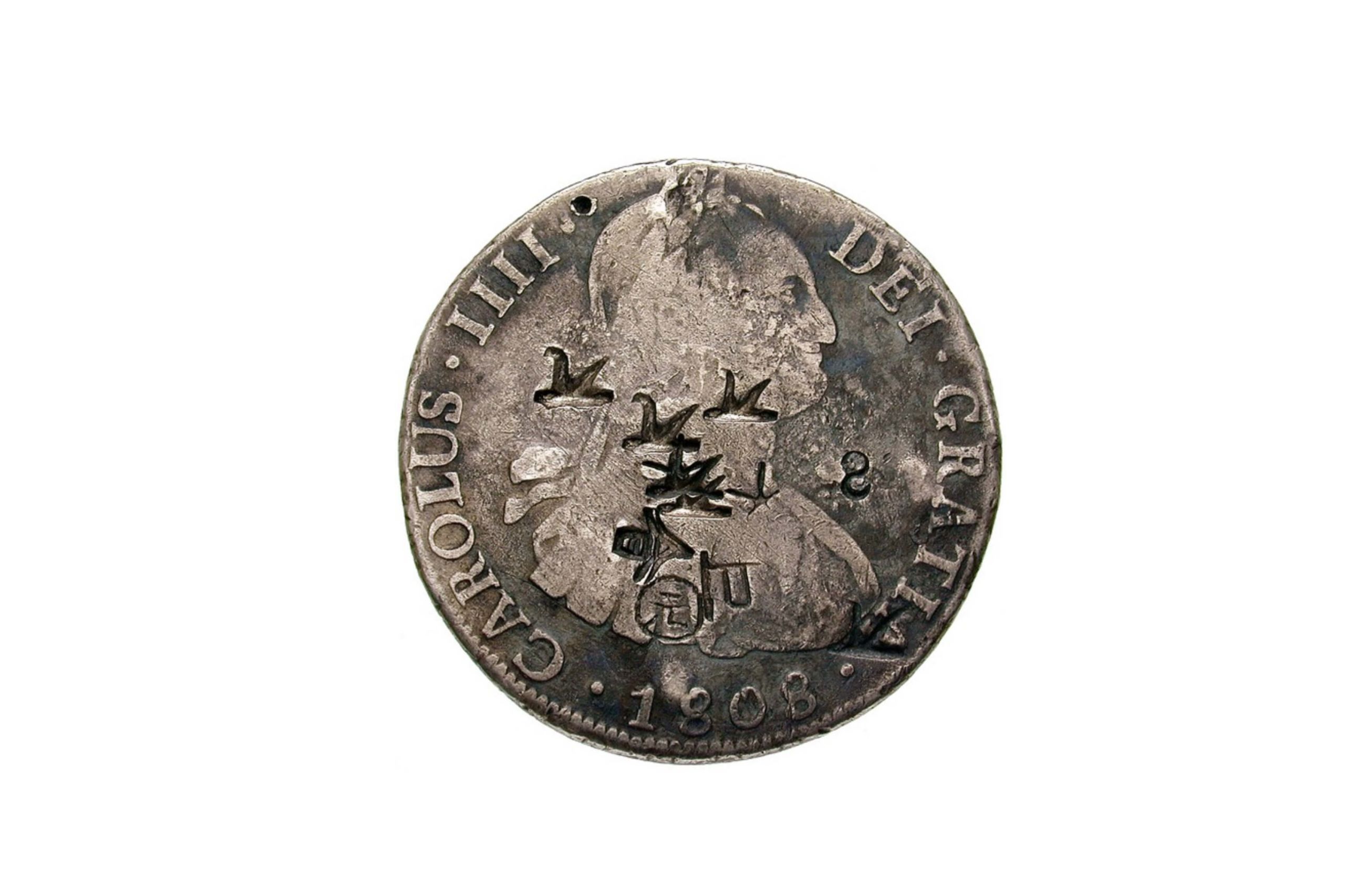
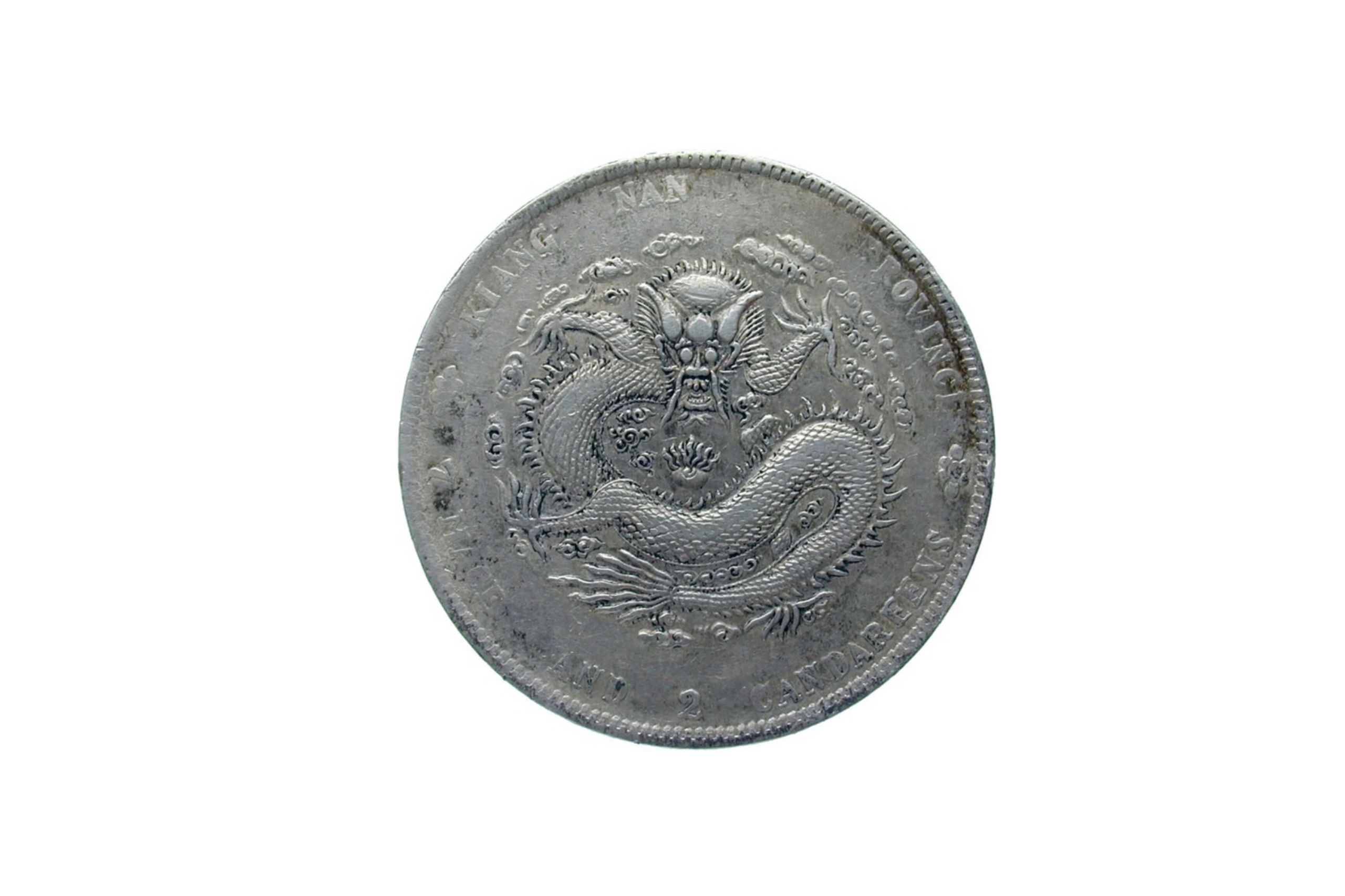
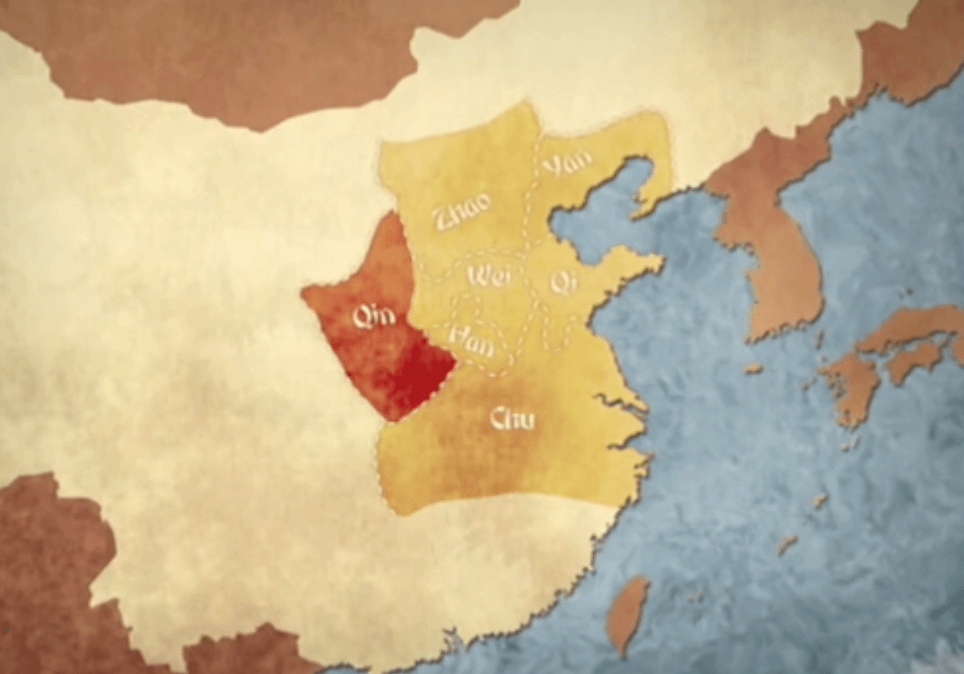
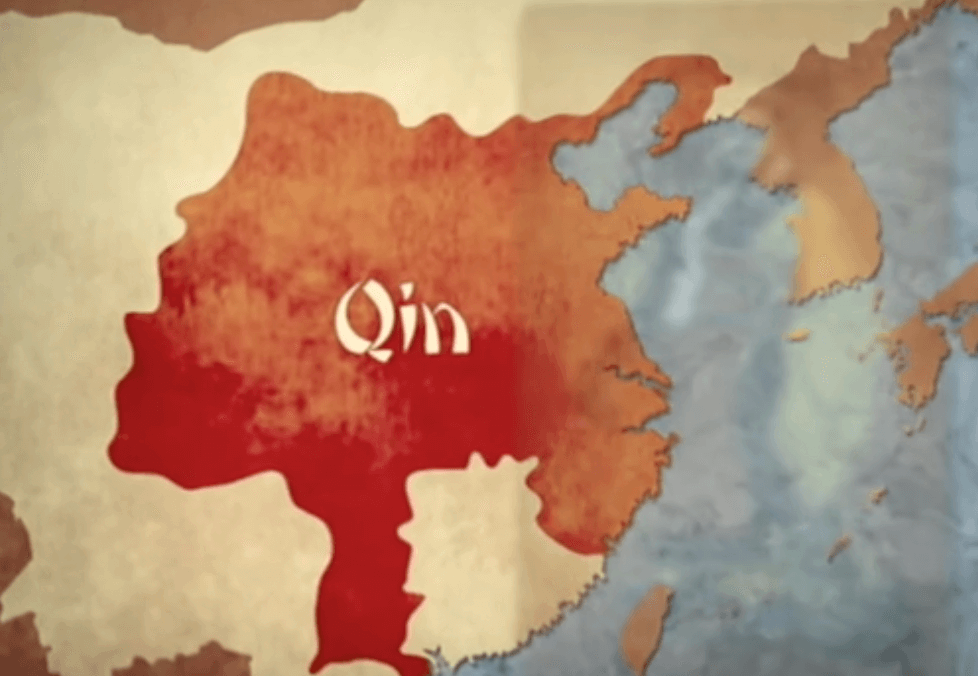
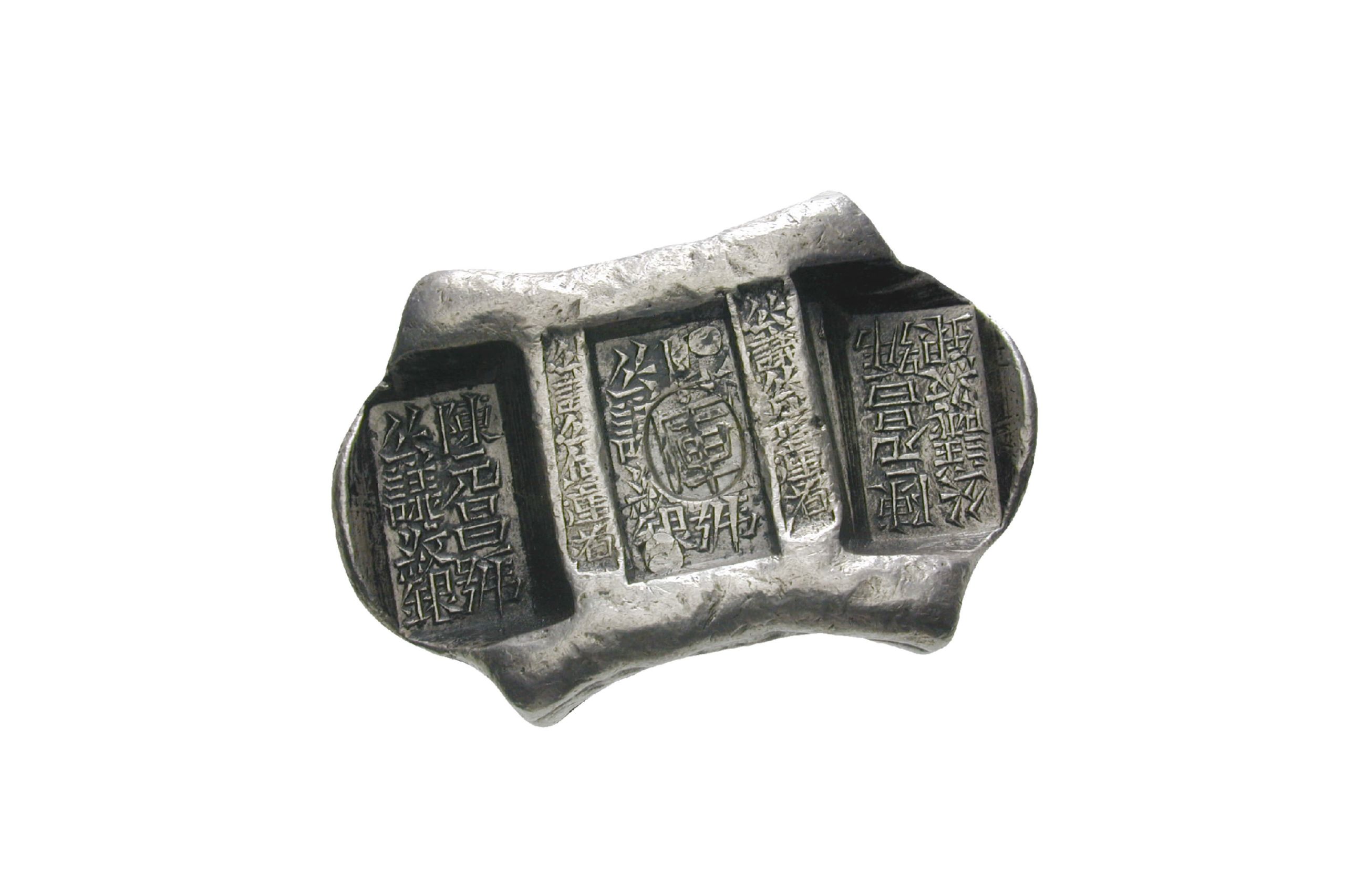

Ein spanischer Peso, der als Silberbarren mit Gegenstempel versehen ist.
Ein spanischer Peso, der als Silberbarren mit Gegenstempel versehen ist.

Der erste Drachen-Dollar
Der erste Drachen-Dollar

Zeit der "Streitenden Reiche"
Zeit der "Streitenden Reiche"

The Qin Empire finally gives China its name.
The Qin Empire finally gives China its name.

The use of silver ingots in China dates back to pre-Christian times. Originally, silver bars did not circulate as a means of payment, but served as hoard money. But gradually, silver began to be used for larger payments. Thus, commercial bars became regular means of payment, circulating in China, Burma and Thailand until deep into the 20th century.
The use of silver ingots in China dates back to pre-Christian times. Originally, silver bars did not circulate as a means of payment, but served as hoard money. But gradually, silver began to be used for larger payments. Thus, commercial bars became regular means of payment, circulating in China, Burma and Thailand until deep into the 20th century.
